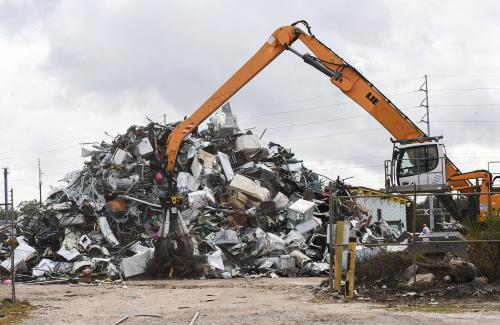Executive Summary
In December 2009, the 15th Conference of
Parties (COP 15), under the guidelines of the
United Nations Framework Convention on Climate
Change (UNFCCC) and in accordance with
the Bali Action Plan (BAP) agreed at COP 13 in
Bali, Indonesia, will attempt to reach agreement
on new international climate change and emissions
policies and regulations. The conference
in Copenhagen, which convenes top negotiators
from 192 nations, will address the significant environmental
policy changes urgently needed to
mitigate the effects of global warming and climate
change.
Given the emissions forecasts of both the industrialized and developing economies, and the disproportionate vulnerability of the world’s poorest nations to climate change-related calamities, there is little debate about the necessity of significant environmental policy changes to mitigate climate change; however, both the proposed benchmarks and regulatory frameworks are often disputed as each nation attempts to minimize national concessions.
Meeting any agreed environmental regulations standards will require the use of a plethora of climate change technologies, to which most developing nations do not have access. The scarcity of a distributed network of such technologies brings forth the debate of intellectual property rights (IPR). IPR refers to the protection of rights for the owners of ideas and innovation, research and development, manufacturing processes, and technology, as well as the required economic payment for the use of a previously patented item.
Though IPR is hotly debated, most research finds that it is not the biggest issue facing technology transfer. IPR’s infamy is likely caused by the sensitive nature of an issue saturated in nationalism. In fact, while the majority of previous research fails to arrive at a conclusion over whether patent protection stimulates or hampers technology transfer, recent research trends and opinions have found little evidence of IP encumbering such transfers.
In international institutional forums, technology transfer has evolved from one of many ingredients for climate change mitigation to now being considered a pillar for successful abatement. Alas, this Policy Brief finds that the remarkable size of such institutions (such as the UNFCCC) begets an unwieldy negotiation process yielding few tangible results, exemplified by the Kyoto Protocol. Other leading institutions – UNEP, the World Bank Group, the WTO, and the GEF – share the UNFCCC’s inefficiencies. The authors contend that not only does the inclusiveness of such multilateral environmental agreements impede concrete resolutions, it also reveals institutional impudence by including scores of poverty-stricken nations with little culpability for global warming trends, and who face various other challenges (disease and malnutrition, for example). More efforts should be made for imparting climate change adaptation strategies and technologies and developing basic electricity access, assuring the poorest nations are best situated for sustained and sustainable economic development in the short and long-term. In addition to a cumbersome negotiating process that may engineer little more than political pique, none of the previously mentioned institutions (excluding the WTO) has any enforceable IP legislation in place.
Given the shortcomings of existing institutions, the authors propose two solutions: in the event of a standoff at Copenhagen, the creation of the E-10, a summit of ten leading emitting nations to collectively reduce their environmental footprint. Drawing on past successes of the ‘G’ forums (G-8, G-20, etc.) including fast and effective responses to two financial crises and agreement on the Africa Action Plan, the E-10 would exploit the benefits of fewer, more capable parties. The group members – the United States, European Union, China, India, Japan, Russia, Canada, South Africa, Australia, and Brazil – account for more than three-quarters of total global emissions.
In the event of an agreement in Copenhagen, the authors propose a collaborative effort between the UNFCCC and private sector firms through the usage of Technology Needs Assessments (TNAs) and a segmented/parallel pricing mechanism. TNAs are country-specific technology requirements based upon geographic and demographic constraints. Developed in conjunction with UNEP, TNAs prevent ‘blanket solutions’ whereby nations receive unsuitable technologies. Segmented/parallel pricing involves selling technology to wealthy nations at market prices and to developing nations on a marginal cost scale.
After Part I’s synopsis of the setting for Copenhagen and the issues at stake, Part II and Part III of this Policy Brief will elucidate the history of intellectual property and its impact on technology transfer and detail the development of technology transfer as a theme to effective climate change abatement strategies, in order to demonstrate the tribulations facing dialogue this December and beyond. Finally, Part IV will detail the weaknesses of current multilateral institutions in formulating an intellectual property (IP)-friendly agreement on technology transfer and Part V will expound the authors’ solution with or without agreement in Copenhagen.



